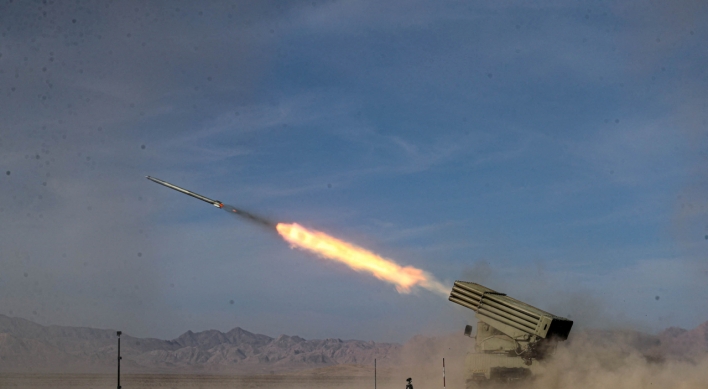PARIS, Oct 19, 2011 (AFP) - Does Facebook alter the brain?
That's the question which flows from an unusual investigation into the online social network used by 800 million people.
Volunteers placed in a 3-D scanner had bigger, denser structures in three areas of the brain if they had a big list of Facebook friends compared to counterparts who had few online friends, scientists found.
The three locations are all linked with the power to socialise.
The superior temporal sulcus and middle temporal gyrus, "are associated with social perception such as perceiving other people's gaze or social cues from facial expressions", said University College London researcher Ryota Kanai.
The third area, the entorhinal complex, "might be associated with memory for faces and names", he said.
Two years ago, Oxford University neuroscientist Susan Greenfield unleashed a storm about online networking and its impact on the young.
"The mid-21st century mind might almost be infantilised, characterised by short attention spans, sensationalism, inability to empathise and a shaky sense of identity," Greenfield warned in a speech to Britain's House of Lords.
Lead investigator Geraint Rees, a UCL professor of neuroscience, said the new study opened up key questions touching on this controversy.
Among them: whether the size of the socialising area of the brain leads one to create more friends -- and whether this area is changed by online social networks... or not at all. Only further work would resolve this cause-or-effect riddle, he said.
The study appears on Wednesday in the journal Proceedings of the Royal Society B, published by Britain's de-facto academy of sciences.
Rees's team enrolled 125 students, 46 of them men, whose average age was 23.
Their Facebook friends varied in number from just several to nearly 1,000.
Averaged out, this meant around 300 friends per volunteer.
These results were then checked, to monitor for any bias, in a separate sample of 40 volunteers.
In a third experiment, the scientists looked more closely at a sub-sample of 65 of volunteers to see whether there was a link between the online world and real world in brain structure.
In addition to undergoing brain scan, this group also filled out a questionnaire about their friends in the real world.
Matching the tally of real-world friendships with that of online friendships, the scientists found only one correlation in brain matter.
This was in an area called the bilateral amygdala, which is believed to process and store memories of emotional events.
There was no such association in the three brain areas -- the superior temporal sulcus, middle temporal gyrus or entorhinal complex -- that had been highlighted in the first experiment.
Rees said this was curious. It could mean that different areas of the brain are used for different forms of socialising.
Previous research has established that the brain is a flexible organ.
If someone learns a particular motor skill -- for example, if they learn to juggle -- then the grey matter in the motor cortex, which controls muscles, becomes thicker.
But bigger does not necessarily mean better, said Rees.
"There are also examples of the other way around, where more grey matter is associated with more distractibility, in trying to concentrate on a particular task.
"So we don't know yet the exact relationship, whether more (grey matter with online networking) is good or not, and we don't know yet the exact cellular constituents, the exact type of nerve cell and what exactly is happening. That's really for future research."
<한글기사>
페이스북 인기男女, '뇌구조'가 다르다
페이스북 친구를 많이 확보한 '인기남'과 '인기녀'들은 그렇지 않은 이들과 머릿속부터 다른 것으로 나타났다.
영국 유니버시티 칼리지 런던의 제레인트 리즈 교수 연구팀은 페이스북 친구가 적게는 10명 이하에서 많게는 1천명에 달하는 남녀 참가자 125명을 선정한 뒤 이들의 뇌를 3-D 스캐너를 통해 비교·분석했다.
그 결과, 페이스북 친구가 많은 참가자들은 그렇지 않은 이들에 비해 뇌의 상측두고랑과 중간측두이랑, 그리고 내비복합체 부분이 더 크고 밀도 있는 것으로 나타났다.
상측두고랑과 중간측두이랑은 타인의 표정에 나타나는 사회적인 신호나 의미를 감지하는 능력과 관계된 부분이고, 내비복합체는 타인의 얼굴과 이름을 기억하는 능력과 관계된 부위로, 모두 사회화 능력과 관련이 있는 부분이다.
연구진은 또 온라인이 아닌 오프라인상의 친구와 관련된 설문을 실시한 결과, 친구가 많은 참가자들은 감정적인 일에 대한 기억 저장을 담당하는 뇌 편도체 부분이 더 발달했다는 점을 확인했다.
연구진은 온라인 상에서 친구가 많은 사람과 오프라인상에서 친구가 많은 사람 간의 뇌의 특성이 비교적 다르게 나타난 것으로 보아 각기 다른 종류의 사회화에는 서로 다른 부분의 뇌가 관여하는 것으로 결론지었다.
리즈 교수는 특정 운동능력을 습득하면 이를 담당하는 뇌의 회백질이 두꺼워지는 등 뇌가 가변적인 조직이라고 설명했다. 그러면서 앞으로는 뇌 속에 사회화를 담당하는 부위가 클수록 친구가 많은 것인지 혹은 친구가 많을수록 뇌의 특정 부위가 발달하는 것인지 인과관계를 규명할 연구가 필요하다고 말했다.
이번 연구 결과는 19일 영국 왕립학회보에 게재됐다.












![[Today’s K-pop] BTS pop-up event to come to Seoul](http://res.heraldm.com/phpwas/restmb_idxmake.php?idx=644&simg=/content/image/2024/04/17/20240417050734_0.jpg&u=)




![[KH Explains] Hyundai's full hybrid edge to pay off amid slow transition to pure EVs](http://res.heraldm.com/phpwas/restmb_idxmake.php?idx=652&simg=/content/image/2024/04/18/20240418050645_0.jpg&u=20240419100350)

![[Today’s K-pop] Zico drops snippet of collaboration with Jennie](http://res.heraldm.com/phpwas/restmb_idxmake.php?idx=642&simg=/content/image/2024/04/18/20240418050702_0.jpg&u=)